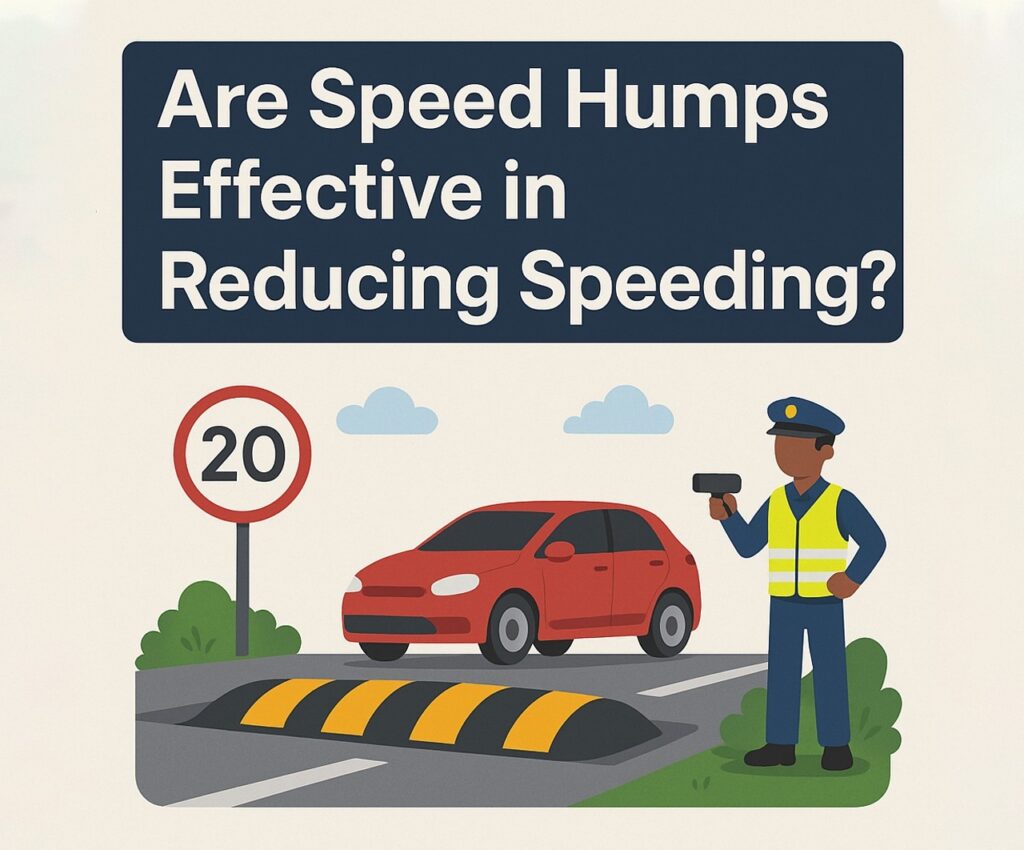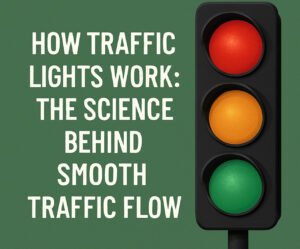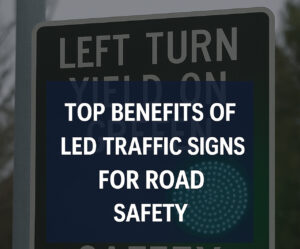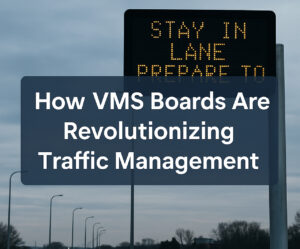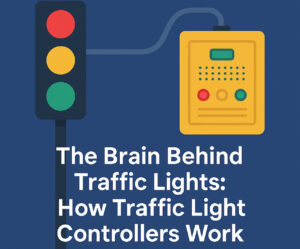When you’re driving through a residential neighborhood or near a school zone, you’ve probably noticed a speed hump sign, a temporary speed hump, or a speed hump road sign warning you to slow down. These traffic-calming tools are everywhere, and for good reason. They’re designed to do one thing: reduce vehicle speeds. But the real question is—do they actually work? Let’s dig into the facts, analyze the data, and see whether speed humps are more than just annoying bumps on the road. Know more..
The Basics of Speed Humps
First, let’s clear up what speed humps are. These are raised sections of pavement, typically 3 to 4 inches high and about 12 to 14 feet long. Unlike speed bumps, which are shorter and more abrupt, speed humps allow cars to pass over them at reduced speeds without causing damage—as long as drivers comply.
Speed hump signs and speed hump road signs are used to alert drivers in advance so they have time to slow down. A temporary speed hump might be installed for construction zones or events to manage traffic in the short term. They’re all part of the same toolbox aimed at making roads safer for everyone.
How Speed Humps Impact Driver Behavior
Let’s talk impact. Multiple studies have shown that speed humps are effective in reducing vehicle speeds. In fact, in many cases, average speeds drop by 20-25% after installation. That’s not a small change.
Here’s how they work psychologically: drivers see a speed hump sign or speed hump road sign, and they instinctively prepare to slow down to avoid the uncomfortable jolt. With temporary speed humps, the effect is the same, even though they might be made of rubber or plastic instead of asphalt.
Drivers respond to these cues. Over time, this leads to slower speeds not only on the hump itself but in surrounding areas, creating a ripple effect. The visual cue of a speed hump sign becomes a mental reminder to watch the speedometer.
Real-World Results
Cities across the globe have used speed humps as part of their traffic management strategy. In Portland, Oregon, for example, a traffic-calming program showed that streets with speed humps saw a 22% reduction in traffic crashes. Similar results have been reported in London, where child pedestrian injuries fell significantly in areas with speed humps.
A key point: the presence of speed hump signs is crucial. Without clear signage, speed humps can cause accidents or damage to vehicles. That’s why speed hump road signs are typically placed well ahead of the hump itself.
Temporary Speed Humps: A Flexible Solution
While permanent speed humps are more common, temporary speed humps offer flexibility. They’re often used in temporary traffic zones or during special events. Think of them as the pop-up shops of traffic control. These are ideal for trial runs, allowing city planners to test effectiveness before committing to permanent installation.
Also, temporary speed humps are easier to remove or relocate if traffic patterns change. They’re less costly and require minimal road work, making them an efficient short-term option.
The Pros and Cons
Pros:
- Proven to reduce speeding.
- Can decrease accident rates.
- Increases safety for pedestrians and cyclists.
- Cost-effective compared to other traffic-calming methods.
- Easy to install and maintain.
Cons:
- May delay emergency vehicles.
- Can be noisy, especially in residential areas.
- Might shift traffic to nearby streets.
- Not suitable for all road types.
Still, most communities find that the benefits outweigh the downsides, especially when speed hump signs and speed hump road signs are properly placed.
Community Feedback
Public opinion is usually split. Residents who live near speed humps often support them because they see direct improvements in safety. Drivers passing through, however, may find them annoying or disruptive. But when you weigh inconvenience against safety, it’s hard to argue against their effectiveness.
Interestingly, surveys show that when temporary speed humps are tested in a neighborhood, most residents support making them permanent afterward. It’s a clear sign that people appreciate what they do, even if they’re not initially thrilled about it.
Speed Humps vs. Other Traffic-Calming Measures
Let’s put speed humps in context. Other traffic calming options include roundabouts, chicanes, raised intersections, and narrowing lanes. Each has its place, but speed humps have a unique advantage: simplicity. They’re easy to install, easy to understand, and require minimal infrastructure changes.
When paired with clear speed hump signs and speed hump road signs, they offer a straightforward solution. Compared to speed cameras, which require maintenance and can be controversial, humps are a passive but powerful deterrent.
Design Matters
Not all speed humps are created equal. Their effectiveness depends on thoughtful placement and proper design. For instance, placing a speed hump road sign too close to the hump doesn’t give drivers enough reaction time. Similarly, placing temporary speed humps in areas with poor lighting or visibility can reduce their impact.
Ideally, humps should be part of a broader traffic-calming plan, supported by signage, road markings, and public education. That way, they contribute to long-term behavioral changes, not just momentary slowdowns.
Final Thoughts: Are They Worth It?
So, are speed humps effective in reducing speeding? The answer is a clear yes. From statistical data to community feedback, the evidence supports their use. Whether it’s a speed hump sign warning of a bump ahead, a temporary speed hump used in a festival zone, or a permanent speed hump road sign installed on a residential street, these elements work together to slow down traffic.
While no solution is perfect, speed humps strike a good balance between cost, ease of implementation, and effectiveness. They’re a small change with a big impact. And in today’s world, where road safety is more important than ever, that’s a bump in the right direction.

